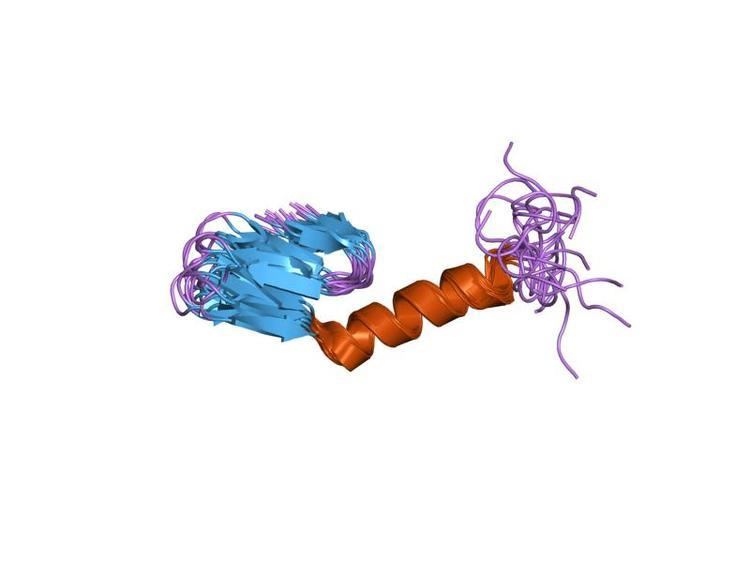Symbol Bacteriocin_II InterPro IPR002633 SCOP 3leu | Pfam PF01721 PROSITE PDOC60030 SUPERFAMILY 3leu | |
 | ||
Class II bacteriocins are a class of small peptides that inhibit the growth of various bacteria.
Contents
Many Gram-positive bacteria produce ribosomally synthesized antimicrobial peptides, termed bacteriocins.
Bacteriocins for which disulfide bonds are the only modification to the peptide are Class II bacteriocins.
Class IIa
One important and well studied class of bacteriocins is the class IIa or pediocin-like bacteriocins produced by lactic acid bacteria. All class IIa bacteriocins are produced by food-associated strains, isolated from a variety of food products of industrial and natural origins, including meat products, dairy products and vegetables. Class IIa bacteriocins are all cationic, display anti-Listeria activity, and kill target cells by permeabilizing the cell membrane.
Class IIa bacteriocins contain between 37 and 48 residues. Based on their primary structures, the peptide chains of class IIa bacteriocins may be divided roughly into two regions: a hydrophilic, cationic and highly conserved N-terminal region, and a less conserved hydrophobic/amphiphilic C-terminal region. The N-terminal region contains the conserved Y-G-N-G-V/L 'pediocin box' motif and two conserved cysteine residues joined by a disulfide bridge. It forms a three-stranded antiparallel beta-sheet supported by the conserved disulfide bridge. This cationic N-terminal beta-sheet domain mediates binding of the class IIa bacteriocin to the target cell membrane. The C-terminal region forms a hairpin-like domain that penetrates into the hydrophobic part of the target cell membrane, thereby mediating leakage through the membrane. The two domains are joined by a hinge, which enables movement of the domains relative to each other.
Some proteins known to belong to the class IIa bacteriocin family are listed below:
Class IIb
The class IIb bacteriocins (two-peptide bacteriocins) require two different peptides for activity. It includes the alpha enterocins and lactococcin G peptides. These peptides have some antimicrobial properties; they inhibit the growth of Enterococcus spp. and a few other Gram-positive bacteria. These peptides act as pore-forming toxins that create cell membrane channels through a barrel-stave mechanism and thus produce an ionic imbalance in the cell
Class IIc
Other class II bacteriocins can be grouped together as Class IIc (circular bacteriocins). These have a wide range of effects on membrane permeability, cell wall formation and pheromone actions of target cells. In particular, Bacteriocin AS-48 is a cyclic peptide antibiotic produced by the eubacteria Enterococcus faecalis (Streptococcus faecalis) that shows a broad antimicrobial spectrum against both Gram-positive and Gram-negative bacteria. Bacteriocin AS-48 is encoded by the pheromone-responsive plasmid pMB2, and acts on the plasma membrane in which it opens pores leading to ion leakage and cell death. The globular structure of bacteriocin AS-48 consists of five alpha helices enclosing a hydrophobic core. The mammalian NK-lysin effector protein of T and natural killer cells has a similar structure, though it lacks sequence homology with bacteriocins AS-48.
